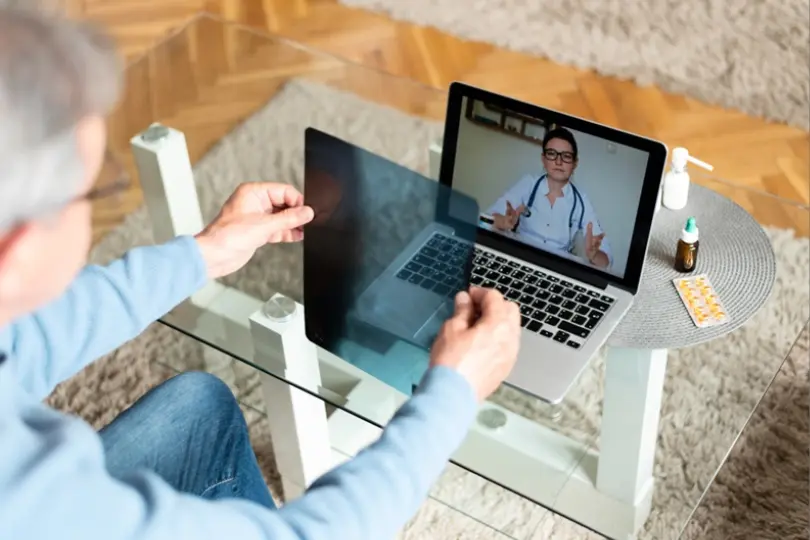
In today’s fast-paced and digitally connected world, mental health care is evolving in ways that make support more accessible and inclusive than ever before. Nowhere is this transformation more visible than in Chicago, a city known for its vibrant culture, diverse communities, and relentless pace of life. Virtual therapy, once considered a backup option, has become a trusted and even preferred method of care for many residents. It’s reshaping how people think about mental health, breaking long-standing barriers, and making therapy an approachable part of everyday life.
The Rise of Virtual Therapy: A Chicago Perspective
The Evolution of Mental Health Support in the Windy City
Over the past decade, mental health care has undergone a quiet revolution. For years, people in Chicago, like in many large cities, faced significant hurdles when trying to access therapy. Between traffic congestion, long work hours, limited insurance coverage, and the stigma surrounding mental health, getting consistent help often felt out of reach.
That changed dramatically during the COVID-19 pandemic. When in-person services became impossible, therapists and clients alike turned to telehealth as a necessity. What began as an emergency solution soon revealed itself to be something more: a highly effective, flexible, and inclusive model for therapy.
In a city like Chicago, where the daily commute can stretch for hours and the pace rarely slows, virtual therapy quickly became an essential tool for maintaining mental wellness. Clients found that they could attend sessions from the privacy of their homes, without worrying about travel or time constraints. Meanwhile, therapists discovered they could reach clients who had previously been excluded by logistical or financial barriers. This period marked a defining shift—a moment when mental health care became not just more accessible but more human-centered.
As studies later confirmed, virtual therapy wasn’t merely a convenient alternative; it was a genuine catalyst for better engagement and long-term wellness. Today, Chicago stands as a prime example of how telehealth can enhance emotional well-being across diverse communities.
Why Virtual Therapy Is Here to Stay
Even after life in Chicago resumed its usual rhythm, the demand for virtual therapy didn’t fade. It grew stronger. People realized that therapy didn’t have to mean sitting in a waiting room or rearranging an entire day for a one-hour appointment. The ability to log in from home or even during a lunch break offered freedom that traditional therapy couldn’t match.
Chicago’s diverse population adds another layer of importance to this trend. Many individuals who once felt hesitant about seeking help, due to cultural norms, financial limitations, or social stigma, now find comfort in the privacy of virtual therapy. No one has to explain where they’re going or worry about being seen entering a clinic.
Local organizations and mental health advocates have taken note. Health departments and community programs are now actively promoting virtual therapy in Chicago as a legitimate and effective path to care. With smartphones and laptops in nearly every household, the city has embraced a new mental health ecosystem, one built on flexibility, comfort, and inclusivity.
Many Chicago-based therapists also report that clients seem more relaxed and forthcoming during online sessions. The familiar environment of home reduces anxiety and helps foster genuine communication. Younger generations, who already navigate much of their lives online, are particularly open to this model. Through virtual therapy, mental health support is becoming not just accessible but normalized.
The Key Benefits of Virtual Therapy
Accessibility and Convenience
One of the biggest draws of virtual therapy is how easy it is to access. For Chicagoans juggling careers, family, and personal obligations, finding the time for self-care can be difficult. Virtual therapy eliminates commute times, weather issues, and transportation costs, allowing clients to prioritize their well-being without added stress.
For residents in underserved neighborhoods or those living outside central areas, online therapy also bridges the gap between need and availability. People who once struggled to find qualified therapists nearby can now connect with specialists across the state or even the country without leaving their homes.
Beyond convenience, virtual platforms enhance engagement through tools like screen sharing and interactive exercises. Therapists can instantly send worksheets, videos, or mindfulness guides, helping clients apply what they’ve learned between sessions. This blend of immediacy and flexibility empowers individuals to take ownership of their healing journey.
Diverse Modalities and Personalized Care
Another major advantage of virtual therapy lies in its versatility. Clients are no longer limited to local options or a handful of in-person providers. With telehealth, Chicago residents can choose from a wide array of specialties—whether they’re looking for cognitive behavioral therapy (CBT), trauma-informed care, dialectical behavior therapy (DBT), mindfulness coaching, or even creative therapies like art and music therapy.
This freedom allows clients to find a therapist who aligns with their goals, values, and cultural background. For many, that match can be life-changing. Virtual platforms also make group therapy and peer support sessions more accessible, connecting individuals from different neighborhoods and life experiences. These groups foster shared understanding and community, reminding participants that they’re not alone in their struggles.
Therapists, too, benefit from the flexibility of virtual settings. They can easily integrate new research and techniques into sessions, offer more consistent follow-ups, and adapt their approaches based on ongoing feedback. In short, virtual therapy doesn’t just make care more available, it makes it more personalized and effective.
Breaking the Stigma: How Virtual Therapy Is Changing the Conversation

For generations, talking about mental health carried an unwarranted sense of shame. In many Chicago communities, seeking therapy was seen as a sign of weakness or something to be kept secret. Virtual therapy is helping to change that narrative.
By removing the physical visibility of therapy visits, online sessions create a sense of safety and anonymity. This allows people. especially those in close-knit or conservative communities, to explore their emotions without fear of judgment. It’s a quiet revolution that’s normalizing open conversations about mental health.
Social media has amplified this effect. More people are now sharing their therapy experiences, offering advice, or discussing coping mechanisms online. Chicago-based influencers, educators, and community leaders are using their platforms to promote self-care and mental wellness, further reducing stigma.
As a result, mental health discussions are becoming as commonplace as conversations about physical fitness or nutrition. And that’s a powerful cultural shift. By embracing virtual therapy, Chicagoans are not only improving their individual well-being but also fostering a collective environment of understanding and compassion.
Real Stories, Real Transformations
Behind every statistic about virtual therapy are real people whose lives have changed for the better. Take the story of a Chicago professional who struggled with anxiety and burnout. Between work deadlines and family obligations, she found it impossible to attend in-person therapy. Once she began online CBT sessions, she learned practical strategies to manage stress and regain control. The flexibility of virtual sessions allowed her to stay consistent, and over time, her confidence and focus returned.
Stories like hers are increasingly common. Chicago’s mental health community is filled with individuals who have found healing through online therapy, students managing academic stress, parents overcoming postpartum depression, and older adults combating loneliness through digital connection. These success stories highlight one truth: when therapy is made more accessible, people are more likely to seek and sustain it.
Getting Started: Your Roadmap to Virtual Therapy in Chicago
Finding the Right Therapist
Starting therapy can feel overwhelming, but taking it step by step makes the process easier. Begin by identifying what you want to work on—whether that’s anxiety, trauma, self-esteem, or relationship challenges. Then explore online directories or telehealth platforms that list licensed Chicago therapists. Many local organizations also provide mental health resources tailored to specific communities or cultural backgrounds.
Once you’ve found potential therapists, schedule introductory consultations. Most offer short, free calls where you can discuss your goals, ask about their therapeutic approach, and get a sense of their personality. Remember, the right fit is essential; therapy is a partnership built on trust, openness, and mutual understanding.
Preparing for Your First Session
Before your first appointment, create a quiet, comfortable space where you won’t be disturbed. Test your internet connection and ensure your camera and microphone work properly. Some clients find it helpful to keep a notebook nearby to jot down thoughts, questions, or takeaways during the session.
Go in with an open mind. Therapy isn’t about perfection—it’s about progress. You might feel nervous or unsure at first, but those feelings are completely normal. Over time, as you build a relationship with your therapist, you’ll find yourself opening up more naturally.
After each session, take a few moments to reflect. Journaling or simply sitting in silence can help you process emotions and recognize growth. Consistency is key—just as you wouldn’t expect immediate results from one workout, therapy works best when practiced regularly.
A New Era of Mental Wellness in Chicago
Virtual therapy has redefined what it means to access mental health care in Chicago. It’s made therapy more inclusive, adaptable, and aligned with the realities of modern life. As more residents embrace this approach, the city is witnessing a quiet but powerful transformation, a shift toward compassion, connection, and collective well-being.
In this new era, therapy is no longer confined to offices or specific schedules. It’s wherever you are, on your couch, at your desk, or even on a park bench overlooking Lake Michigan. And with every conversation, Chicago moves closer to a future where mental health care is not a privilege, but a right accessible to all.
Photo Credit:
Photo 1, Credit to Freepik || Photo 2, Credit to Freepik (CC0 1.0)




![[Infographic] Transforming Healthcare with a Value-Based Care Model Transforming Healthcare with a Value-Based Care Model](https://www.safeandhealthylife.com/wp-content/uploads/2024/08/Value-Based-Care-Model-150x150.webp)